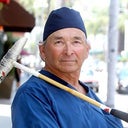I am nervous about anesthesia and wanted to know if I would be able to do a type of anesthesia that doesn't require you to be put to sleep for a Rhinoplasty. Also, I know I need to go in for an official consultation, but I wanted some feedback on my nose and what I could do to adjust it and therefore enhance my face.
I don’t want anything too invasive and was trying to avoid breaking the bridge. I was looking at possibly having the tip of my nose sculpted and maybe fillers on my bridge for my profile. I just wanted to know if I wanted a straighter bridge and wanted to fix my depressed tip, that I believe I have, would I be able to use a twilight anesthesia? Any suggestions?
Answers (25)
From board-certified doctors and trusted medical professionals
Dr. Andrew Jacono, MD

Dr. Andrew Jacono, MD
Board Certified Facial Plastic Surgeon
Answer
Dr. Richard J. Bruneteau, MD

Dr. Richard J. Bruneteau, MD
Board Certified Plastic Surgeon
Answer
Dr. Raffy Karamanoukian, MD, FACS

Dr. Raffy Karamanoukian, MD, FACS
Board Certified Plastic Surgeon
Answer
Dr. Stephen Prendiville, MD

Dr. Stephen Prendiville, MD
Board Certified Facial Plastic Surgeon
Answer
Dr. David C. Pearson, MD

Dr. David C. Pearson, MD
Board Certified Facial Plastic Surgeon
Answer
Dr. Eric M. Joseph, MD

Dr. Eric M. Joseph, MD
Board Certified Facial Plastic Surgeon
Answer
Dr. Toby Mayer, MD

Dr. Toby Mayer, MD
Board Certified Facial Plastic Surgeon
Answer
Dr. Richard W. Westreich, MD

Dr. Richard W. Westreich, MD
Board Certified Facial Plastic Surgeon
Answer
Dr. Steven J. Pearlman, MD, FACS

Dr. Steven J. Pearlman, MD, FACS
Board Certified Facial Plastic Surgeon
Answer
Dr. Louis M. DeJoseph, MD

Dr. Louis M. DeJoseph, MD
Board Certified Facial Plastic Surgeon
Answer
More Rhinoplasty Questions
See all Rhinoplasty Q&AWE SEND PRETTY
EMAILS
What’s trending? Who’s turning heads? Which TikTok myths need busting? We’ve got you. No fluff, no gatekeeping—just real talk. Get our free, unfiltered newsletter.